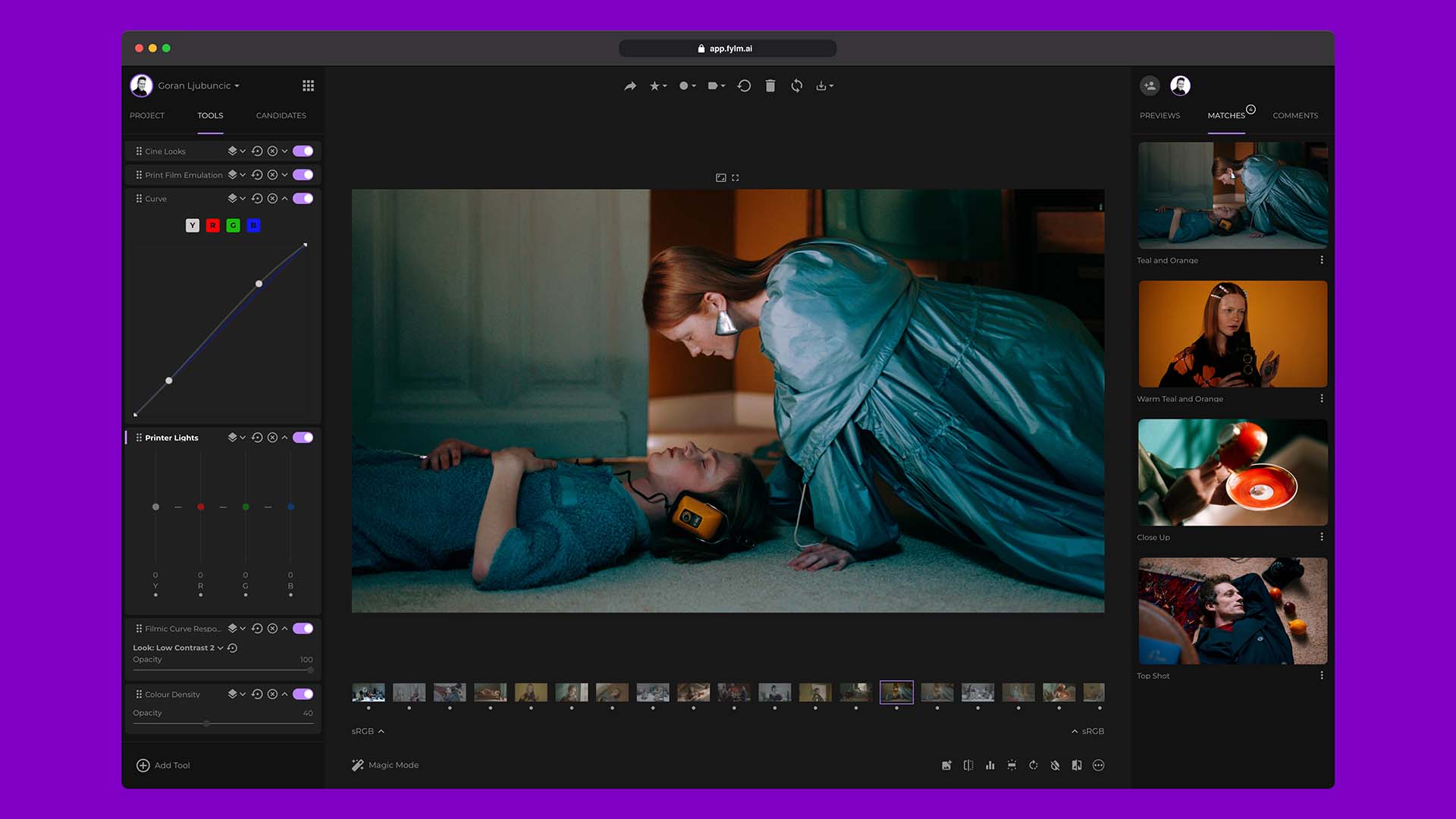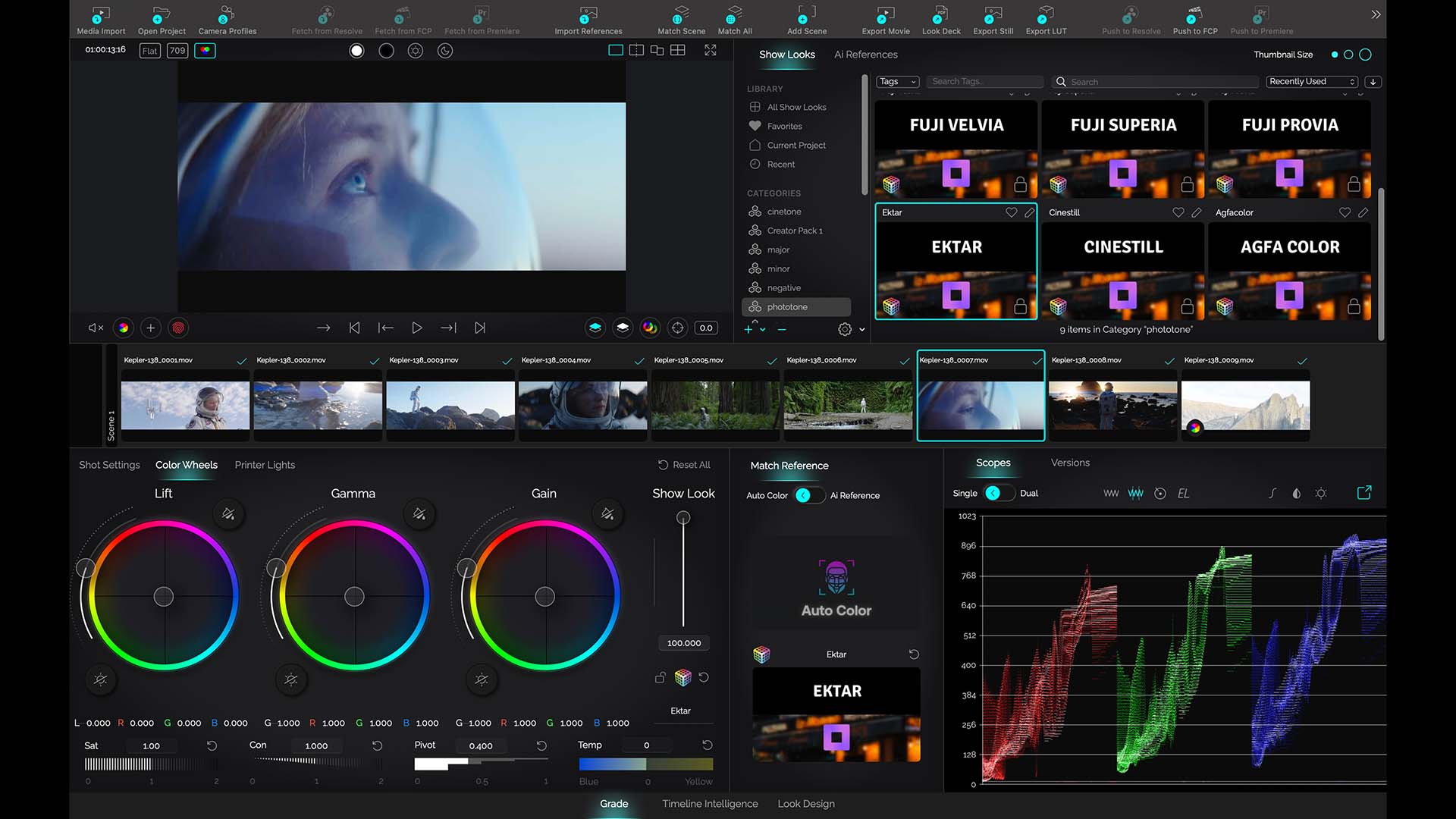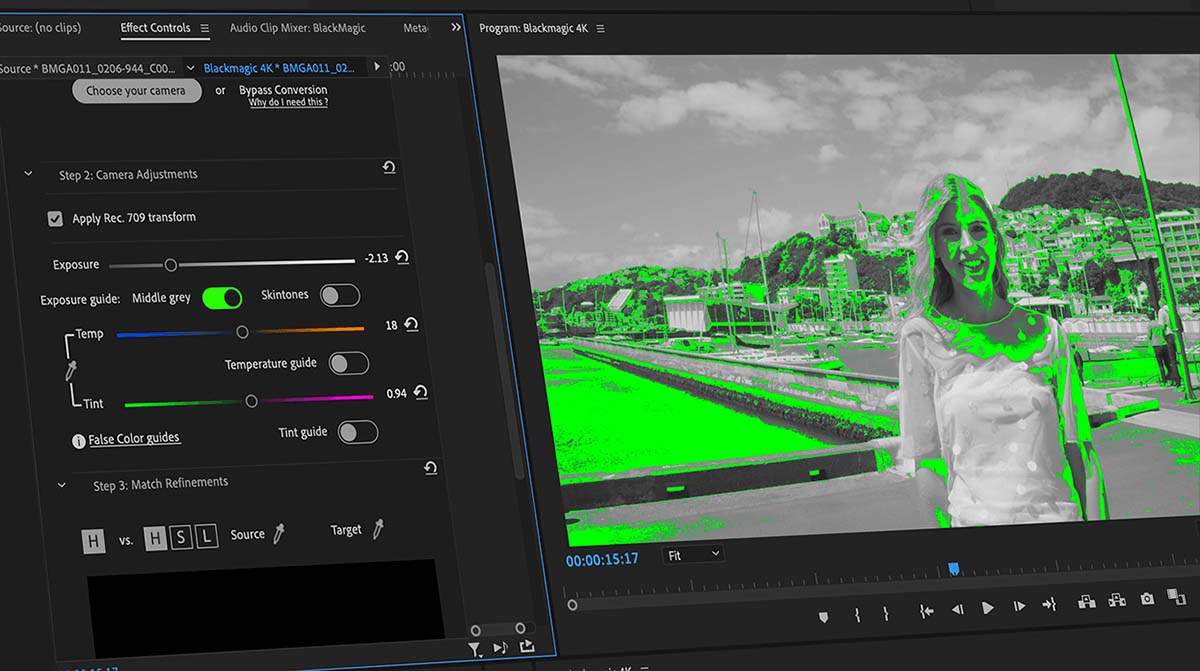
Phil Rhodes on the advent of ai based grading systems. Will they take over the world?
We probably shouldn’t celebrate the idea that grading is a low-cost way to fix things in post, although lots of people like the idea, possibly because it’s available at near-zero cost to productions at every level while simultaneously bearing the stamp of approval from the high end. The trick, of course, has always been achieving anything useful with those tantalising trackballs.
In 2022, we have a couple of options. We can grab some LUTs off the shelf, which are imbued with the benefit of someone else’s opinion, or we can reach for a machine that’s capable of having an opinion of its own. As so often, what some people like to promote as AI is possibly better described as machine learning, although either way, automated grading is probably one of the most promising places to deploy the systems we have. Sometimes, it’ll be a better idea than the traditional approach of selling someone a selection of carefully-named lookup tables in the hope that they’ll be a good enough match to anyone’s camerawork to do something useful – although those LUTs are at least guaranteed to do the same thing every time.
Fylm.ai
The last year has seen lots of new and updated grading software, suggesting that the three hundred dollar gorilla of Resolve – which itself recently launched a beta of version 18 – doesn’t represent such overwhelming competition that it’s discouraging people from offering an alternative. The new guard is represented by things like Fylm.ai and its practically occult ability to extract LUTs from images. Those LUTs will exhibit the same joys and concerns as any other LUT, and matching the results of someone else’s photography might also require duplicating someone else’s camera technique, lighting and production design, but it’s certainly an impressive trick.
There’s even a feature the company calls “magic mode,” which essentially provides some ideas for refinement in much the same way a meat-based colourist might. There are a lot more features, and the small teams version is $16 a month, hovering on the border of “so cheap it’s a no-brainer” and, for one plugin that does one thing, “hmm, long-term this ends up being fairly expensive.”
Similarly, new features such as the Auto Tone feature in Premiere’s Lumetri colour panel have shown some promise, though how legitimate a claim the implementation has to the term “artificial intelligence” isn’t really knowable to anyone outside the company. It certainly seems to work visibly better than the more conventional mathematics of the Auto Color feature it replaced.
Colourlab AI
Colourlab AI, which released the second version of its eponymous intelligent grading tools in July 2021, promotes Colourlab, Look Designer and GrainLab. There’s a suggestion, with the AI Reference feature, that working with Colourlab could even be somewhat like working with a flesh and blood trackball-tickler, but it’s hard to say how well any of this really works without having used it for a long time on a variety of different footage. The suite is available for Premiere, Final Cut Pro, and integrates with Resolve and Live Grade. Laudably, there are $39 monthly, $299 yearly or $599 perpetual license options.

Colourlab.ai.
The old guard, meanwhile, has also seen some impressive development. If we want something straightforward, predictable and easy to controlo, the classic LUT pack has been considerably refined in the form of ColorFuse, part of BorisFX’s Sapphire 2022 bundle (the Sapphire bundle, with capabilities way beyond just colour, sells for $500, which is less than $2 per effect). The company talks about 50 colour presets, with the interesting and useful ability and blend them together. That’s something that Resolve will do but which requires some intermediate-level node wrangling; as ever, Boris’s approach is one of saving time and getting things done.
FilmConvert
For more automation, consider FilmConvert’s CineMatch, which has a highly analytical approach that seeks to solve some of the more difficult matching problems using computer horsepower; it can match both cameras and shots (it’s not very clear how those two issues differ once it’s all on a timeline). CineMatch became available for Final Cut at the end of last year, having long been available for other platforms, including Resolve, for the best of both worlds. All versions cost about $200 for the full license.
CineMatch does something that many camera manufacturers would probably rather wasn’t done, by analysing the colour performance of cameras and treating them as what they are: a knowable, physical reality, as opposed to some sort of near-mythical special sauce. Yes, that means there are options to match two wildly different cameras, and while the absolute performance of both naturally imposes absolute limitations, it’s been shown to work surprisingly well.

FilmConvert Cinematch.
FilmConvert’s other major product represents something of a throwback to the days when trying to make digital images look like film was a widely-promoted service (Filmlook, perhaps the founding father of that particular concept, has been doing it since the late 80s). The company’s Nitrate plugin is available for Premiere, After Effects, Final Cut Pro and Resolve, and produces what’s really a very nice-looking simulation of grain that’s rendered dependent on the underlying. It’s $200 as part of the FilmConvert bundle, or $139 individually.
A lot of the variety in these kinds of tools comes from the eternal quest to find the ideal compromise between adjustability and complexity. The more tweakable something is, the more it can do and the more footage it’ll work with, but the more it demands from the user. That’s always been the case, although the AI approach potentially puts a sharp bend in the road; allowing that machine opinion various levels of influence over the result can make things easier, or make them harder to control, depending on exactly how it’s been done.
Suffice to say that the white heat of AI research can only make this sort of thing better and better over time, though the film industry is still just about enough of a den of art geeks that just because a technique makes something easier, cheaper, faster and better is not necessarily enough to guarantee its immediate and widespread adoption.
Tags: Post & VFX Colour Grading


Comments